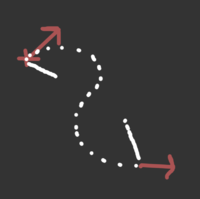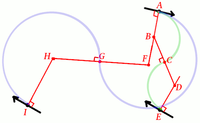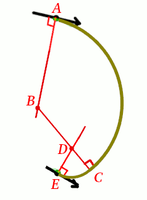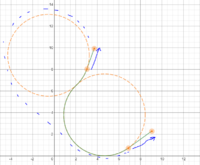Hello
I am trying to find a simple way to find two arcs that connect two points with their two tangents.
Things i know from the start:
A = start point vector,
A' = tangent / direction vector at A (magnitude 1)
B = end point vector,
B' = tangent / direction vector at B (magnitude 1)
So it looks like this:

I'm aware there is also probably many solutions so i am looking to find one where the control points at each end point are equal in magnitude as a constraint to find the midpoint and the two arcs which should force a single solution ( i think? ).
I have already found how to get a circle from a start point, start tangent direction and end point. But solving for 2 tangents is a little beyond my math abilities.
I am trying to eventually find the two arcs with the following data:
Origin
Radius
StartAngle from counter clockwise travel
EndAngle from counter clockwise travel.
I am trying to find a simple way to find two arcs that connect two points with their two tangents.
Things i know from the start:
A = start point vector,
A' = tangent / direction vector at A (magnitude 1)
B = end point vector,
B' = tangent / direction vector at B (magnitude 1)
So it looks like this:

I'm aware there is also probably many solutions so i am looking to find one where the control points at each end point are equal in magnitude as a constraint to find the midpoint and the two arcs which should force a single solution ( i think? ).
I have already found how to get a circle from a start point, start tangent direction and end point. But solving for 2 tangents is a little beyond my math abilities.
I am trying to eventually find the two arcs with the following data:
Origin
Radius
StartAngle from counter clockwise travel
EndAngle from counter clockwise travel.



